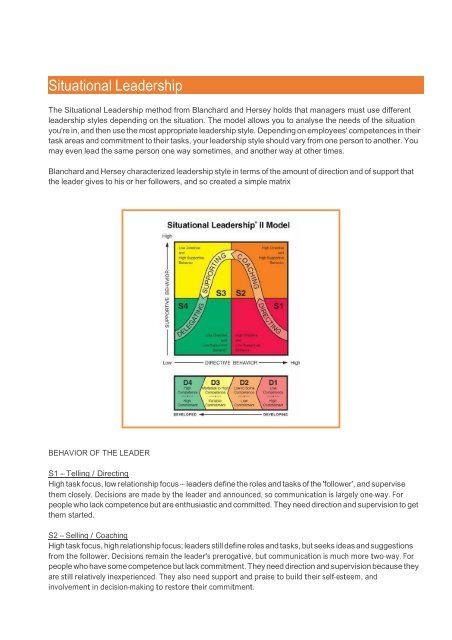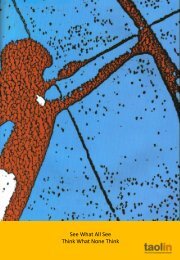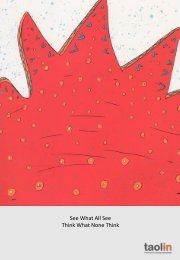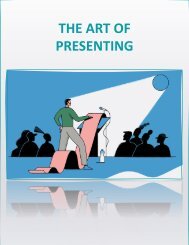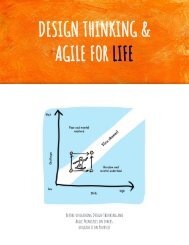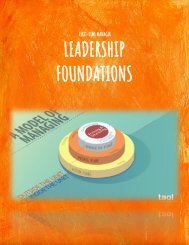2020 iLEAD e-book
- No tags were found...
You also want an ePaper? Increase the reach of your titles
YUMPU automatically turns print PDFs into web optimized ePapers that Google loves.
Situational Leadership<br />
The Situational Leadership method from Blanchard and Hersey holds that managers must use different<br />
leadership styles depending on the situation. The model allows you to analyse the needs of the situation<br />
you're in, and then use the most appropriate leadership style. Depending on employees' competences in their<br />
task areas and commitment to their tasks, your leadership style should vary from one person to another. You<br />
may even lead the same person one way sometimes, and another way at other times.<br />
Blanchard and Hersey characterized leadership style in terms of the amount of direction and of support that<br />
the leader gives to his or her followers, and so created a simple matrix<br />
BEHAVIOR OF THE LEADER<br />
S1 -‐ Telling / Directing<br />
High task focus, low relationship focus -‐ leaders define the roles and tasks of the 'follower', and supervise<br />
them closely. Decisions are made by the leader and announced, so communication is largely one-‐way. For<br />
people who lack competence but are enthusiastic and committed. They need direction and supervision to get<br />
them started.<br />
S2 -‐ Selling / Coaching<br />
High task focus, high relationship focus; leaders still define roles and tasks, but seeks ideas and suggestions<br />
from the follower. Decisions remain the leader's prerogative, but communication is much more two- ‐way. For<br />
people who have some competence but lack commitment. They need direction and supervision because they<br />
are still relatively inexperienced. They also need support and praise to build their self- ‐esteem, and<br />
involvement in decision-‐making to restore their commitment.


